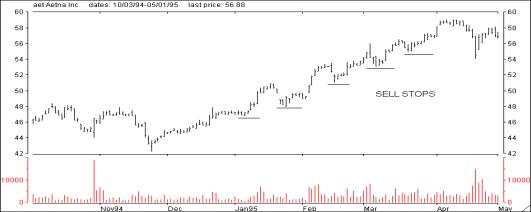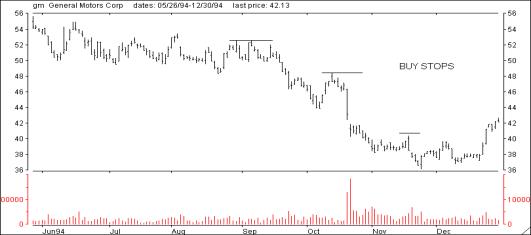 The Right Stock At The Right Time®
The Right Stock At The Right Time® The Right Stock At The Right Time® The Right Stock At The Right Time® |
|
||
|
Placing Protective Stop-Loss Orders
Stops should remain unchanged if the price of the stock moves lowers. However, as the price of the stock moves higher, the stop should be adjusted upward. The following chart shows the proper placement of sell-stop orders as AET moved up in price over the January-April time frame.
 Locating the most recent, previous cyclical high from the time a position was originated and adding 1/2 of a point produces the buy-stop for a short sale position. The chart below shows the initial buy-stop at 53 for a short-position in General Motors (GM) opened in mid-September @ 50. As GM sank, the buy-stop orders would have been adjusted down to 41 as the stock traded down to the high 30's.  This technique of determing protective stocks is far surperior than the random percentage method. Cyclical analysis takes into effect the volatility of the stock as well as pinpointing significant areas of support or resistance that if violated typically point to a trend reversal. Neither of these factors are considered when simply using a 10% stop. Market Edge computes buy and sell stops based on this technique and includes them on the stock's Second Opinion report.
|